





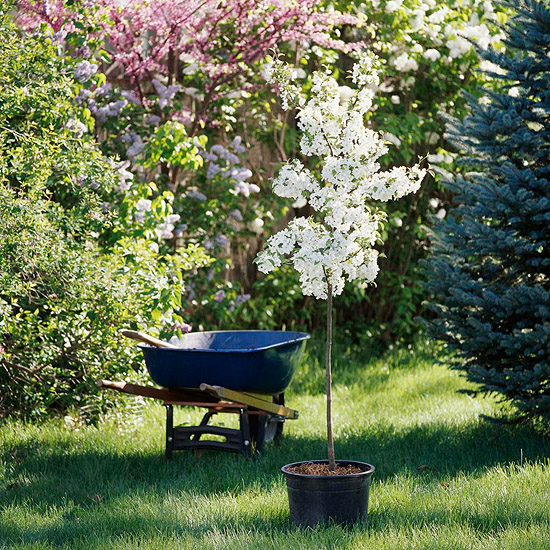
Once you understand the science of planting trees, you'll have your own in no time. Digging a wide planting hole is the key to fast growth of your new tree. Recommendations often specify a hole twice as wide as the root ball; three times as wide is even better.
To prevent settling, the depth should be no more than the height of the root ball.
See our step-by-step guide and planting tips below.
Learn more about planting trees and shrubs.
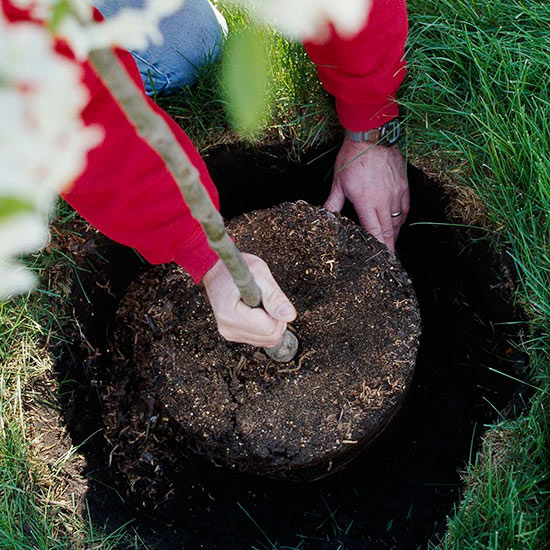
First, prepare a hole two to three times as wide as the root ball of your tree. Handle the root ball carefully to keep it intact while you place it in the hole.
Once it's in, turn it so the best side of the tree is facing the direction you want. With burlapped root balls, cut the twine and remove the burlap (or at least push it to the bottom of the hole).
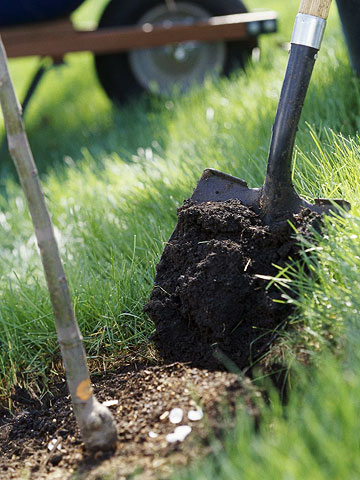
Backfill around the root ball, lightly packing the soil as you go. Frequently check the trunk to ensure that it's straight. Use leftover soil as a berm to create a watering well.
Amending backfill with organic matter is an old practice. However, several studies have shown that it produces little benefit (as long as the existing soil is of reasonable quality), so many experts no longer recommend it. The most important factor, by far, is loose soil that new roots can easily grow into. That's why a large planting hole is so vital.
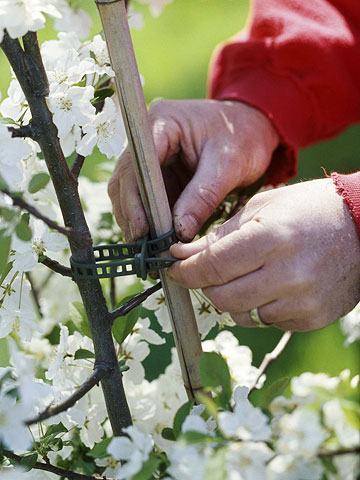
Drive the stake through the root ball into the ground underneath. The stake should be tied loosely to the trunk; do not lash it tightly.
Large trees may need two or three stakes placed several feet from the trunk.
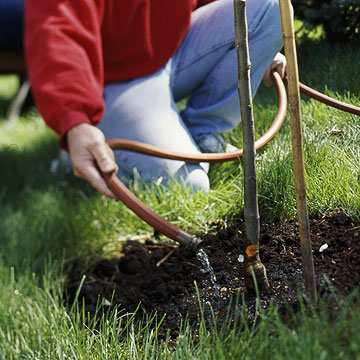
Water the tree soon after planting and every day for several weeks afterward. By that point, the roots will have begun to grow out into the surrounding soil, and you can begin to gradually reduce the frequency of watering.
Fertilizer is of marginal benefit at planting time, and can even be harmful. Wait until the following year, then provide a moderate dose of fertilizer.
A 3-inch layer of mulch around the base of the tree will keep weeds out and reduce water loss.
Tip: Newly planted trees should only be pruned to remove broken, dead, or diseased limbs. Otherwise, leave them be until after their first growing season.
Copyright © www.100flowers.win Botanic Garden All Rights Reserved